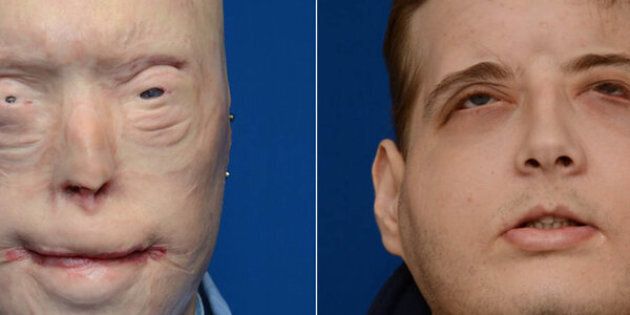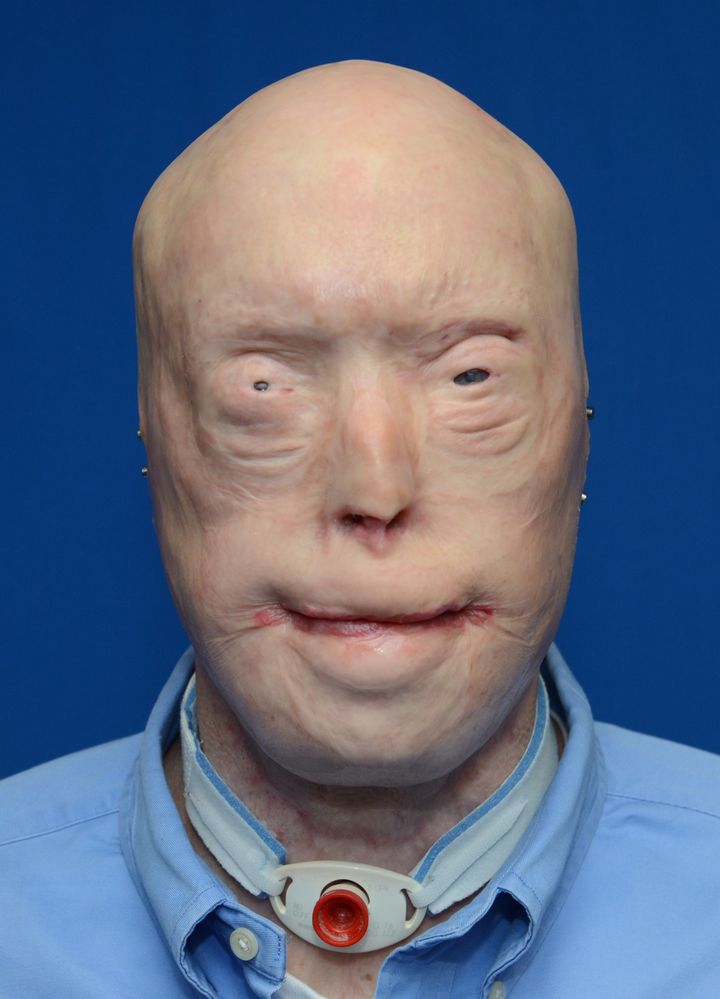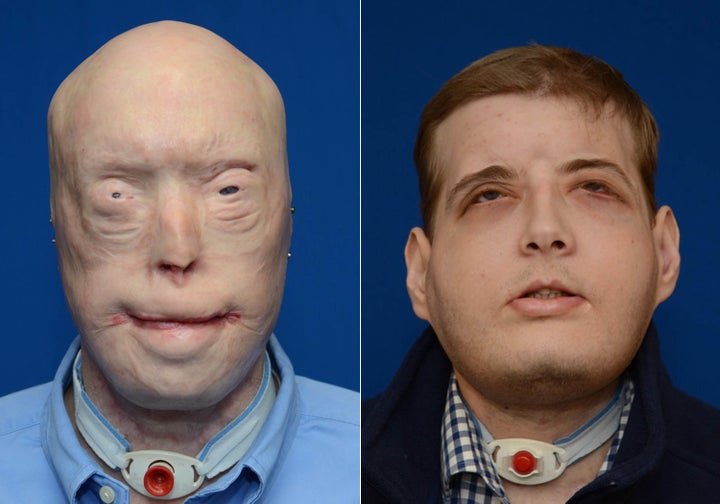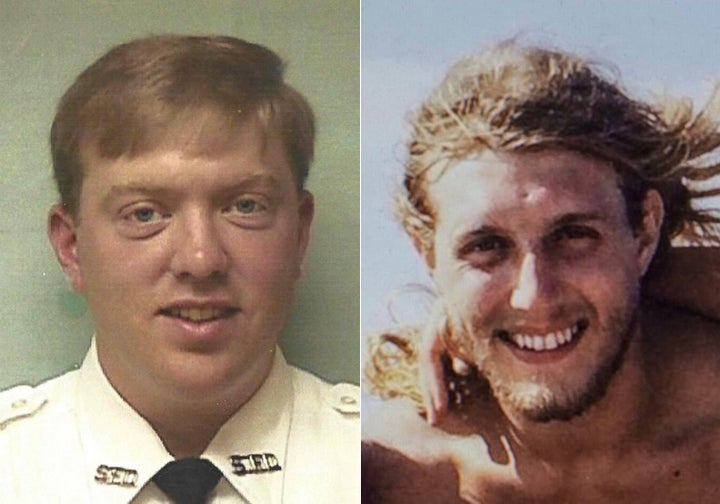

The doctors behind the most extensive face transplant operation ever performed are out with a new report on the remarkable 26-hour procedure and how it has transformed the life of Patrick Hardison, a former firefighter horribly disfigured by burns sustained in the line of duty.
(Warning: Photos below are graphic.)
The report, published in the July issue of the journal Plastic and Reconstructive Surgery, gives a detailed look at the risky surgery, which took place last August at NYU Langone Medical Center in New York City.
It includes a graphic educational video of the procedure and previously unreleased photos of Hardison and the face donor, including some images that the doctors deemed too gruesome for widespread release ― like this one and this one.
There’s also a blow-by-blow of the surgical techniques used by the team of more than 100 doctors, nurses, technicians and support staff, as well as details on how Hardison, a 42-year-old father of five from Senatobia, Mississippi, has fared since the surgery.

The doctors’ aim in preparing the report was to help improve outcomes for all face transplant patients ― especially those with extensive face and scalp burns like Hardison’s.
“Being an academic surgeon, I think it is important that we publish,” Dr. Eduardo D. Rodriguez, the lead surgeon and co-author of the report, told The Huffington Post. “And our experience ― the approach and the basic science ― can help other teams outline how to go about performing these types of operations.”
Rodriguez said he was pleased by the results of the surgery ― believed to be the 37th face transplant ever performed and the only one that involved transplanting the eyelids, ears and scalp, as well as the face ― and the fact that Hardison’s immune system hasn’t rejected the transplanted tissue.
Tissue rejection is a problem for many transplant patients, including another high-profile face transplant recipient, Charla Nash, a Connecticut woman who got a new face in 2011 after being mauled by a chimpanzee in 2009.
Rodriguez is also gratified by the improvement in Hardison’s quality of life.
“We’ve seen that Patrick is integrating into society again,” he said, adding that Hardison no longer must depend on help from his mother and that he has even been able to “jump into the pool,” something he hadn’t been able to do since his injury.
Not surprisingly, Hardison too is pleased at how things have turned out.
“Even though I understood the risk of undergoing a face transplant, I never once doubted that it was something I needed to do,” Hardison told HuffPost in an email. “For instance, before the surgery, I couldn’t drive and didn’t sleep well since I couldn’t close my eyelids. Now I am able to do both of these things, which has really enhanced my quality of life. “
In addition to enjoying better mobility and sleep, Hardison is now able to speak, breathe and eat with less difficulty. His appearance is also vastly improved, as you can see in the before and after photos above.
Hardison was burned on Sept. 5, 2001, while fighting a house fire in Senatobia, losing his eyelids, ears, lips, most of his nose and all his facial hair. He spent 63 days in the hospital and underwent scores of surgical procedures to repair damaged tissue and restore lost function.
But the loss of tissue and scarring were so extensive that little could be done about his appearance. As a result, Hardison began hiding behind sunglasses and a baseball cap when he ventured out in public.
Hardison lived that way for almost a decade and a half. Then, on the evening of Aug. 12, 2015, he learned in a phone call from New York City that a donor face was available. He flew to New York City the next day. One day later the NYU doctors cut away his badly scarred face and replaced it with the unblemished face of David Rodebaugh, a 26-year-old who had been declared brain-dead after a bicycle accident.

(Doctors covered Rodebaugh’s denuded face with a lifelike silicone mask created from a mold made after death but before the removal of his face and scalp ― to protect Rodebaugh’s family from needless distress.)
Hardison spent more than two months in the hospital after the transplant and then another month or so in an apartment near the hospital before returning to Mississippi, hospital officials said. In the months since then, he has returned to New York on a regular basis for follow-up care.
Hardison’s life isn’t the same as it was before his injury, of course. And the threat of rejection and other medical problems is ever present. But Hardison recognizes his good fortune in getting a new face ― and is quick to express his gratitude.
As he told HuffPost, “I am eternally grateful to David and his family for giving me this precious gift.”
